How I moved my A&P Course Online
Published September 28, 2017

I’ve been teaching Human Anatomy and Physiology at Bucks County Community College since 2002. Since 2005, I’ve been doing that as hybrid and fully online courses. In this article, I’m going to share with you the tools I’ve been using to effectively teach A&P online.
There are 5 essential principles of my course:
- Orientation: Make sure students are aware of exactly what is expected of them and how your course works as early as possible.
- Consistency: Content delivery and assessment methods should be consistent throughout the course to help students get into a routine.
- Rigor: You don’t have to water down the course just because it’s online. There are plenty of tools out there to help you help your students understand the difficult concepts and volume of content we have in A&P. With proctoring centers and online proctoring services, having proctored exams is very doable in the online format.
- Engagement: Keep your students working. I use adaptive-learning reading assignments, high-level homework assignments, and anatomy AND physiology lab simulations that give students up to three assignments per week. This keeps them engaged in the material without letting them lag too long in between.
- Finally, consistent communication is essential. I answer emails quickly and as completely as possible. I also utilize web-conferencing tools like Skype or the one provided by my learning management system. These tools have screen-share features so I can go over exams with students, bring up a power point, or a lab image, or whatever I need the student to see. I treat it like virtual office hours.
A comprehensive orientation is very helpful. What works best for me is to deliver a guided document made up of screenshots and explanations of the components of my course. I make sure the students know what is expected of them, how to find the administrative and content materials, how to reach me when need be, and how to find and complete their assignments and exams on time. I like to put links to important things, like my syllabus, right on the home page so they can’t miss it. I’ve also made videos introducing myself and explaining the course as well. I typically email a link to these documents and videos to my roster about one week before the semester begins.
For the content of my A&P course, I have made very simple websites that organize my materials into three categories. It’s not necessary to make your own websites. You can do the same thing I’ve done using the pages on your learning management system.
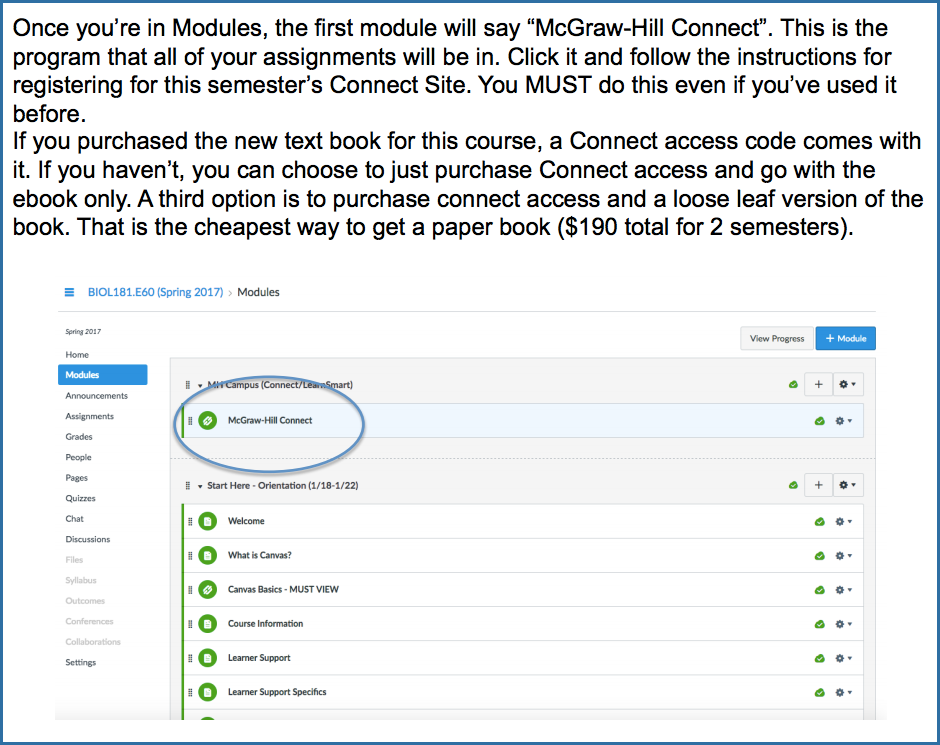
My content pages all have the exact same organization of the material. This consistency helps students find what they need on a weekly basis. I allow them to download my lecture notes and power point slides, they have access to videos I’ve made and animations from the text publisher, and my lab materials, which include photos from my lab, their anatomy lab structure lists, cadaver photos from Anatomy & Physiology Revealed, histology images, ECG and spirometry printouts, etc.
I find it’s important to keep the students engaged in the material throughout the semester. I organize my course in weekly modules and the students have 2 to 3 assignments due per week.
The first assignment, due early in the week, is their Smartbook reading assignment. Smartbook is an adaptive e-reading experience to which I can assign a due date and a grade. As they go through the reading, they are offered additional learning resources, like slides and videos. The students are asked questions throughout the chapter or section to make sure they understand the assigned learning objectives. If they don’t, Smartbook highlights the section they need to review and offers up the learning resources that can help them.
Click here for more information on Smartbook.
I give my students detailed instructions of how I recommend they tackle each week in my course. After the reading assignment, I urge them to begin going over my lecture notes while they view the power point slides I’ve uploaded. This will help them hone in on the content from the chapter that I have determined the most important and is most in line with the learning outcomes my department have assigned to this course. I create tutor videos for my students to use, which are available on YouTube, and my recorded lectures via Tegrity.
Tegrity is a lecture capture software within Connect. It records my computer screen and the audio and those recordings stream right through a link in my Connect course. I record all of my face-to-face meetings, be they lectures or discussions, and upload them to my online sections’ course spaces. Online students don’t have to miss out on anything that happens during class.
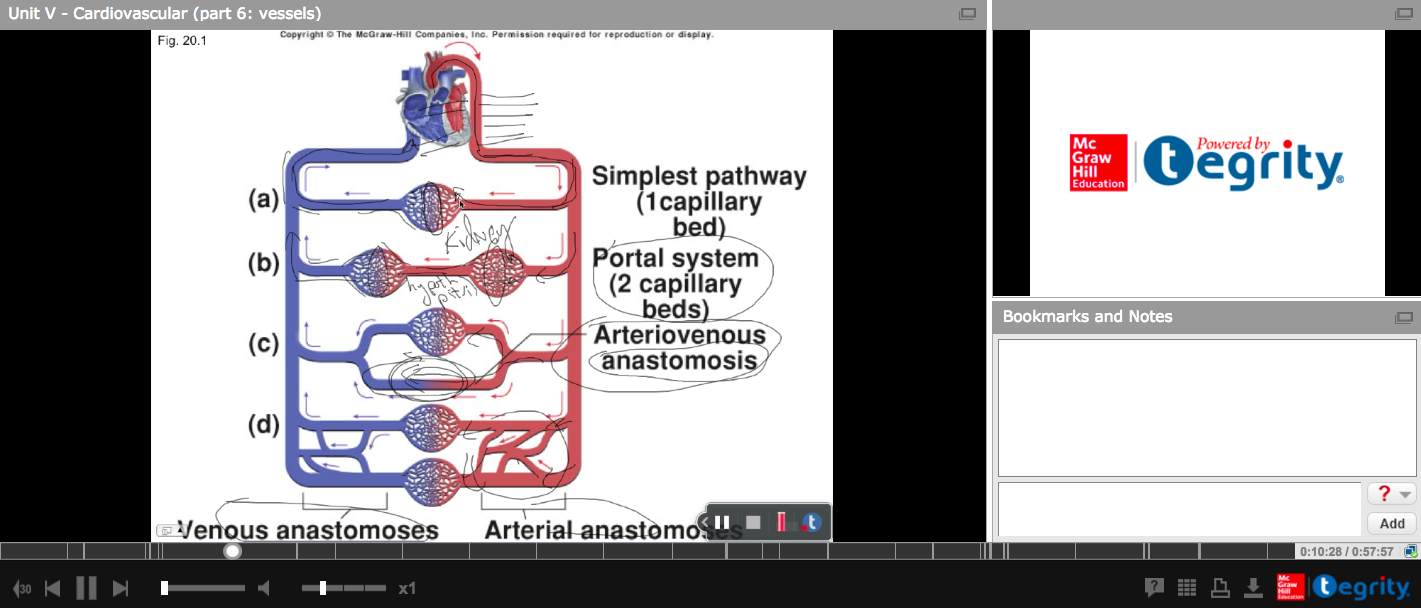
The second assignment is a laboratory assignment. I typically make this due a couple of days after the Smartbook assignment. This is a Cadaver dissection simulation using Anatomy & Physiology Revealed, or a physiology lab simulation using Learnsmart Labs.
Included with Connect access Anatomy & Physiology Revealed, or APR, gives students virtual access to a real cadaver. Photos of cadavers in various aspects of dissection are available to manipulate, investigate, and assess. My students are given exercises to complete via a workbook where they have to locate anatomical structures I give them in advance. Once they find them, they fill out the workbook pages. The cadavers can be virtually dissected using sliders that peel away, and return, layers of the human body. Radio buttons will reveal tags on the cadavers so the students can locate and highlight different structures and spaces. Once clicked, students will get additional information about the anatomy and will hear a correct pronunciation.
Once the students have completed the workbook assignment. I have them complete a quiz in Connect that asks them to give me their results. This way they don’t have to send me their workbook pages. I can have an auto-graded record that they
completed the assignment accurately.
In addition, Connect has over 1,000 questions using the content from APR that I can add to my homework assignments, quizzes, and exams to assess the students on their knowledge of human cadaver anatomy. To get a much more in-depth explanation of all the things APR does, please contact your McGraw-Hill representative, visit www.aprevealed.com.
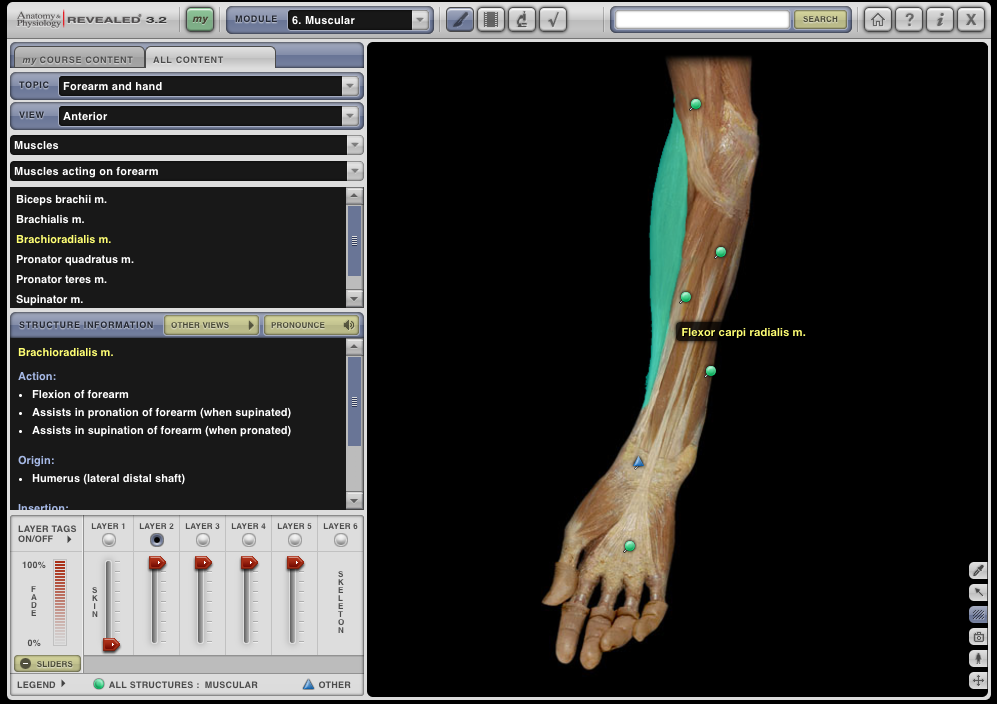
For physiology lab simulations, I use LearnSmart Labs, which is a comprehensive, realistic simulation that runs on the same adaptive learning engine as SmartBook. That means it is based on learning outcomes and the program itself will assess whether or not the students are achieving these learning outcomes while they complete the exercises and activities. LearnSmart labs has dozens of lab activities based on several A&P topics.
I can assign lab activities that range from cellular function, to gross anatomy, to clinical experiments. There is even a virtual microscope. The students are graded on their performance in the labs, answers to questions they are given throughout the activity, and the collection and analysis of their data. Finally, they can complete a lab report, which can be saved as a pdf and printed or emailed to me. Best of all, these labs are assignable directly through Connect, which means it is auto-graded and creates a column in my LMS’s grade book.
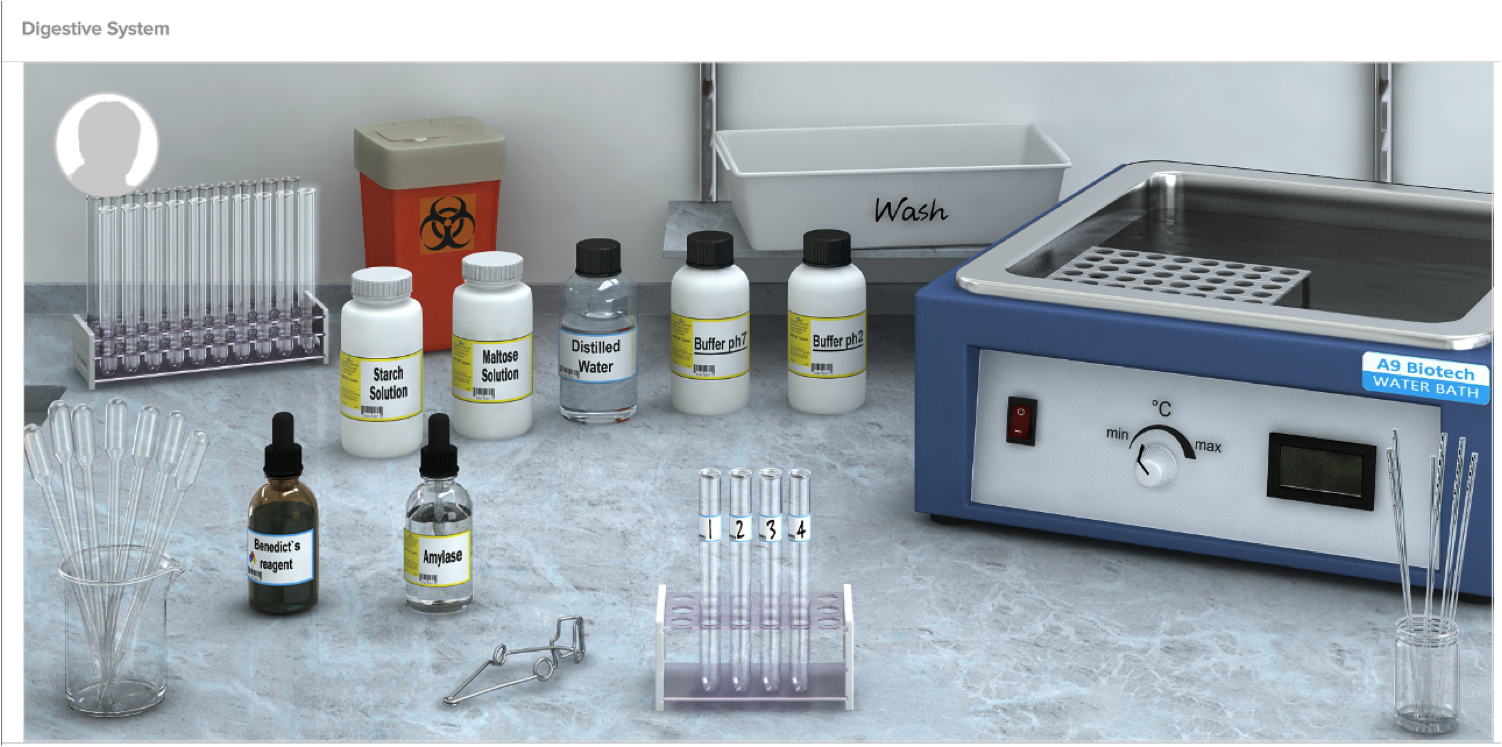
The last assignment of the week is what I consider their exam preparation. I call it the weekly homework assignment. This is where they can practice answering the kinds of questions I’ll be asking them on exams. I am a firm believer in practice. I asses my students with high-level, critical thinking, and concept application questions, which is why I believe students should be given an opportunity to answer higher-level questions for practice. Students receive feedback from the assignments, or they can reach out to me when they need help with something they’re just not quite getting yet.
Using the question banks in Connect for my textbook, I can choose from over 6000 questions to use to make an assignment. Each question is tagged to a style, a level of Bloom’s taxonomy, a section in the text, and a learning outcome. So, I can choose my questions carefully based on any of those categories. Since each learning outcome has multiple questions tagged to it, I can create question pools and have Connect randomly assign questions within those pools to each student. Therefore, I can let them complete these assignments from home without worrying about them sharing theirs with others. No two students will have the same assignment. As you can see here, the pooling can be quite extensive, making it as if there are dozens and dozens versions of your assignment.
The question banks in Connect have several styles of questions, including multiple choice, true/false, matching, labeling, sequencing, classifying, composition, concept application, clinical application, APR’s cadaver images, other lab specimens, muscle models, and more. Plus, they’re all customizable. So, instructors can tailor any of these questions to his or her own needs. It’s a pretty simple process and anyone can do it.
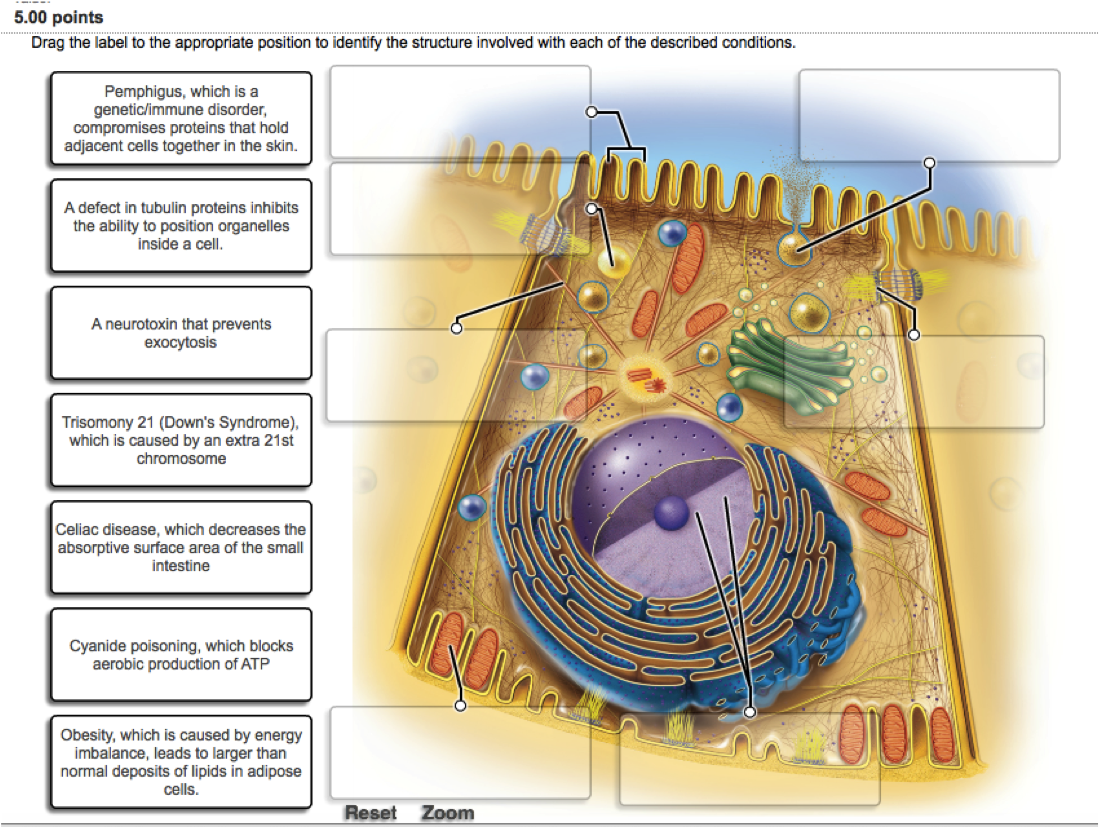
Many instructors have different preferences on how to administer assignments. How many attempts do you give them? Should it be timed? When can students see their answers? These are a few of the many policy options at the instructor’s disposal. Here’s what I do: I don’t time students. I want the students to practice all week. The assignments and practice are not worth much in my class, only 6.5% of their grade, so I want them to be looking the answers up, asking me questions, etc. These assignments and practice are learning tools, not high-stakes assessments. This is why I don’t time them. Also, I give students 3 attempts and on the second and third attempts, they have the option to re-work the questions they didn’t get full credit on before. Students can’t see the answers to the questions until the due date has passed. They are only shown their total scores and their scores on each individual question. There are hints, explanations, and opportunities to check their work. The instructor has complete control over how these are handled. You can turn them off complete, penalize the student for using them, limit their use, etc. The policy options really allow the instructor a lot of control.

You’ll also notice that one of the preset options is “Exam.” When you choose exam, the default is that there is 1 attempt, it’s password protected, not hints, no checking, etc. I use this for my proctored exams, which make up 85% of my grade. I use our on-campus testing centers for most of my students, but some secure a proctor remotely, which I have to confirm as valid, for their exams. Online proctoring services that utilize the computer’s webcam and screen-monitoring, are available. Except for the proctoring, my exams are the same format as my homework assignments, utilizing questions they have not yet seen. In addition to the question bank, there is also a “test bank” that is reserved for questions we do not allow the students to see in an unproctored environment.
Just to add to the exam security, I don’t release the exams for view from home without my supervision. I typically utilize a screen-share conferencing tool, like Skype, to go over exams with any student who wishes to.
As you can see, an online A&P course can be rigorous, valid, engaging, fair, and pedagogically sound. No student should have to feel as though he or she had to “teach themselves” the material. I’m sure there are great tools out there that others use and I haven’t mentioned. That’s great as well. This has been a summary of how I’ve been delivering my online A&P course for some time now. It’s been very successful and I have had very little push back from transfer institutions about accepting the credits.
I really hope this article has answered some questions for you and your online A&P course. If you have any questions about any of the tools I’ve showed you, please do not hesitate to contact your McGraw-Hill Representative by clicking here: http://shop.mheducation.com/store/paris/user/findltr.html
You can always send me an email anytime at stephen.sullivan@bucks.edu.
I also have a video which brings this content to life here: